Medicine in the West Wing: A Conversation with Jeffrey Kuhlman ’87, MPH Physician to the President
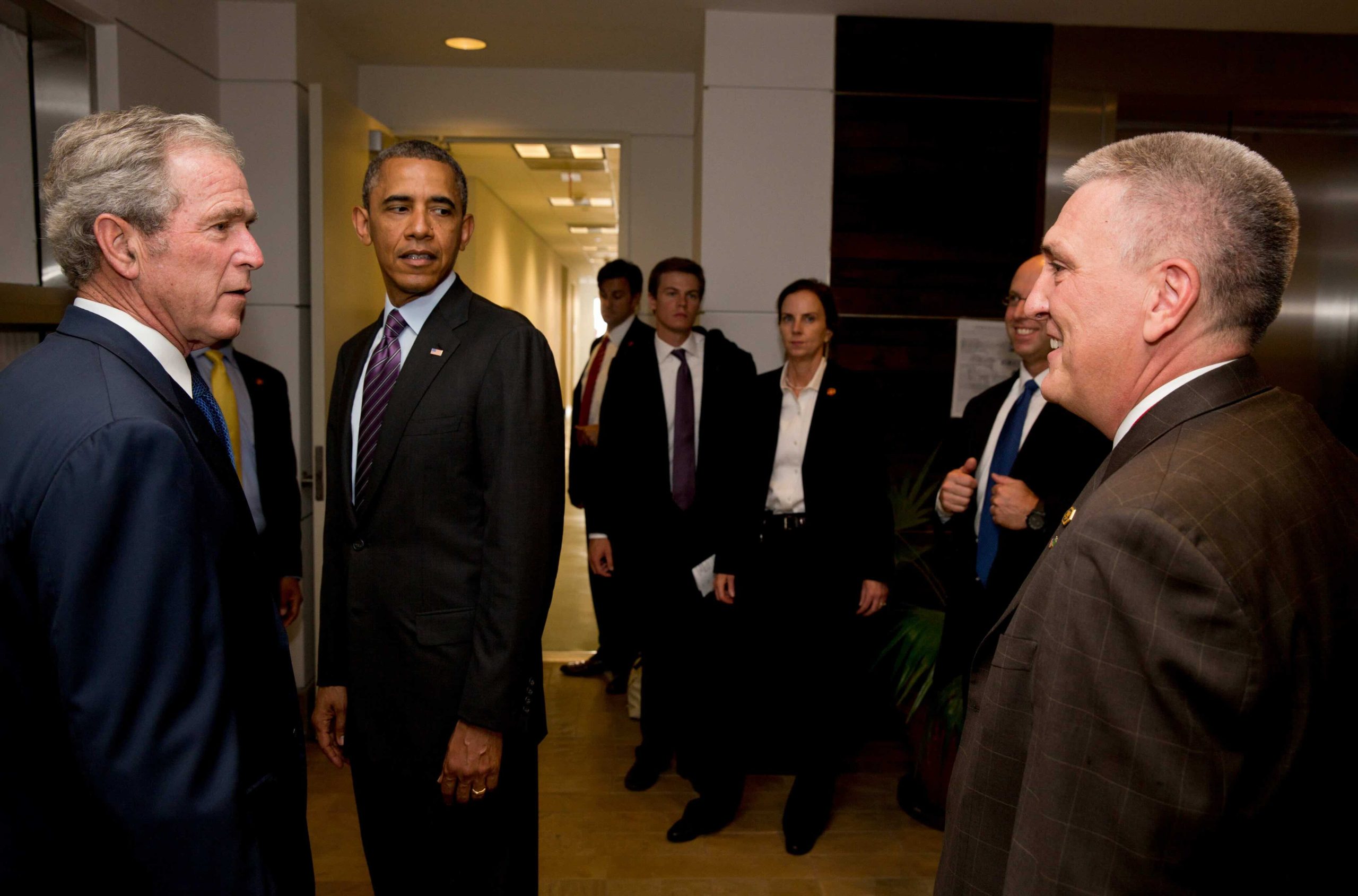
Every minute of every hour, the physicians who work at the White House Medical Unit (WHMU) carry the responsibility of the health and well-being of those who serve in the highest office in the country. Jeffrey Kuhlman ’87, MPH served 3 presidents in a number of roles over his 13 years in the WHMU, including director of the WHMU and personal physician to the president. During his tenure, Kuhlman oversaw an expansion of the duties and scope of the WHMU. Today, the WHMU provides personalized medical care for the president and their family and the vice president and their family, acts as the first responders for the Eighteen Acres (a term used to describe the White House complex), and runs a clinic in the Old Executive Office Building. In a conversation with the ALUMNI JOURNAL, Kuhlman shares about his book, “Transforming Presidential Healthcare,” and what it is like to stay within two minutes of the president in order to immediately provide care for those under his charge in the U.S. and abroad, and the joys of extraordinary experiences of the position.
How did you approach being the personal
physician to the president?
It’s important to give patient-centered medical care. You follow your training and treat them medically like you would anyone else in doing that evaluation. The office they hold is arguably the most powerful position, but the president has to trust their doctor. Out of context, we’d get arrested for what we do in medicine. We pull out a knife and cut people, or we examine somebody without clothes on, or just all kinds of odd things. Medicine needs to be practiced in the proper setting and within a relationship built on trust. In this position, it should not be about politics. It shouldn’t be about policy. It’s about trusted medical advice.
You write in your book “Transforming Presidential Healthcare” that a physician must be two minutes from the President. Why is this?
The physician and the critical care nurse are within two minutes from the president at all times because the president is human, and they can have an out-of-hospital cardiac arrest. We have an automatic external defibrillator (AED) with somebody who is trained, equipped, and ready to use it. The doctor and the military aid that carries the nuclear football, the codes, along with at least two Secret Service members are on every elevator movement that the president makes. We have a designated seat on Air Force One. We’re in the spare limousine, and we carry a lot of equipment in the medical compartment. We can make a hospital bed and turn it into an ICU, all with a few minutes of preparation. We have anesthesia equipment, lifesaving and routine medications, and the paraphernalia to deliver IVs, shots, and therapeutics. That’s part of the bubble, the presidential protective detail. During the middle of the night, if we’re needed, we’re there. While traveling with the president, I always slept with my door unlocked because there were several times when the first family’s personal aid would come knock on my door and come in and say, “Hey, we need X.” And it’s nothing top secret. They have something in their eye or they can’t stop coughing. I’ve been in some of the most magnificent hotels and palaces in the world, but we enter through the kitchen or the service quarters. It’s not glamorous. It’s functional and we’re prepared.
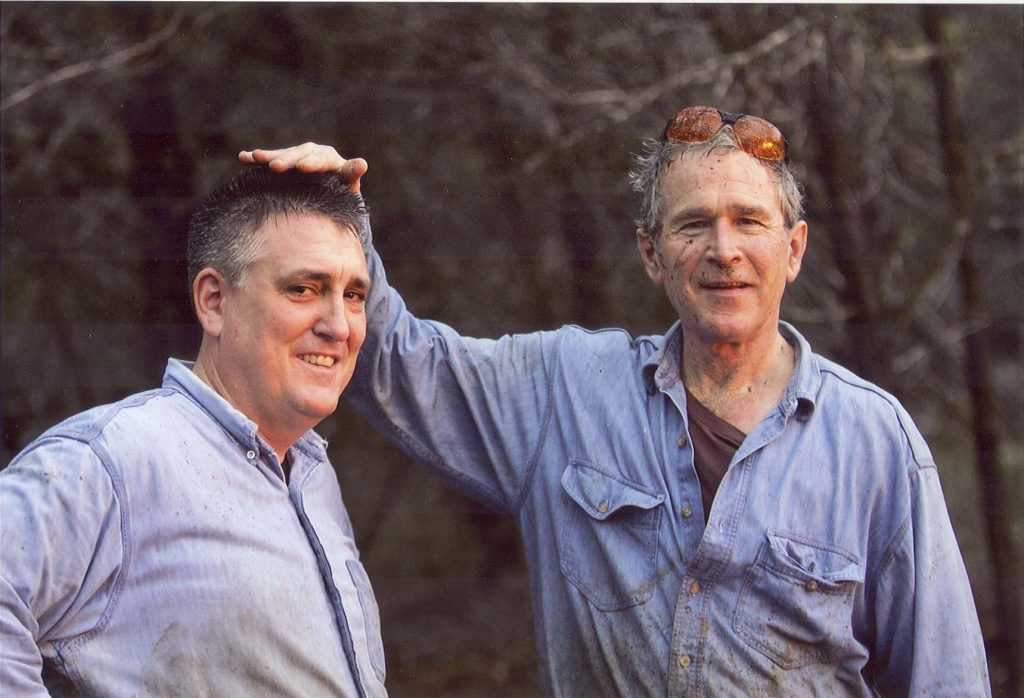
How often did you see the President?
Well, I saw him every day. Many times, people think, “Oh, your office was at Bethesda, at the Naval Hospital.” No, my office was on the ground floor of the residence. For his commute, the president comes from the second floor, takes the elevator down to the ground floor, walks by my office with me sitting in or standing there, and says, “I don’t need anything today. I don’t know what you’re going to do.” And then he walks down across the Rose Garden over to the Oval Office, and he’s at work in about a minute.
It seems that a physician with the White House Medical Unit has an unusual scope of practice.
So, we provide protective medicine. We talked about out-of-hospital cardiac arrest—we’ve never had to use the AED for the president or his senior staff. We provide care under fire. We really upped the game in the early two thousands. If the president gets shot or stabbed, we keep them from getting hit again, keep the blood in the body, and get them to a Level I trauma center as fast as possible. We learned it from the battlefields of Afghanistan and Iraq. We have the antidotes and biological agents all the time for asymmetrical threats. We have the training for chemical warfare agents, anthrax, smallpox, other viral agents, hemorrhagic fever, tularemia, and plague. We actually carry medication for prevention and treatment with us. It is busier and broader than the typical family physician.
What has been your approach to caring for the President and everyone at Eighteen Acres?
What I tried to do is give whole person care—mind, body, spirit. With that, there is room for allopathic medicine, complementary alternative medicine, osteopathic manipulation, counselors, and chaplains. We had nurses trained in therapeutic massage, especially important since President Bush ran three miles in 18 minutes!
I’m a full-hearted believer in the American College of Lifestyle Medicine. If you look at Adventist teachings, our health care founders got it right a hundred years ago with a physically active life, a plant-based diet, and temperance in your choices of alcohol, tobacco, or drugs.
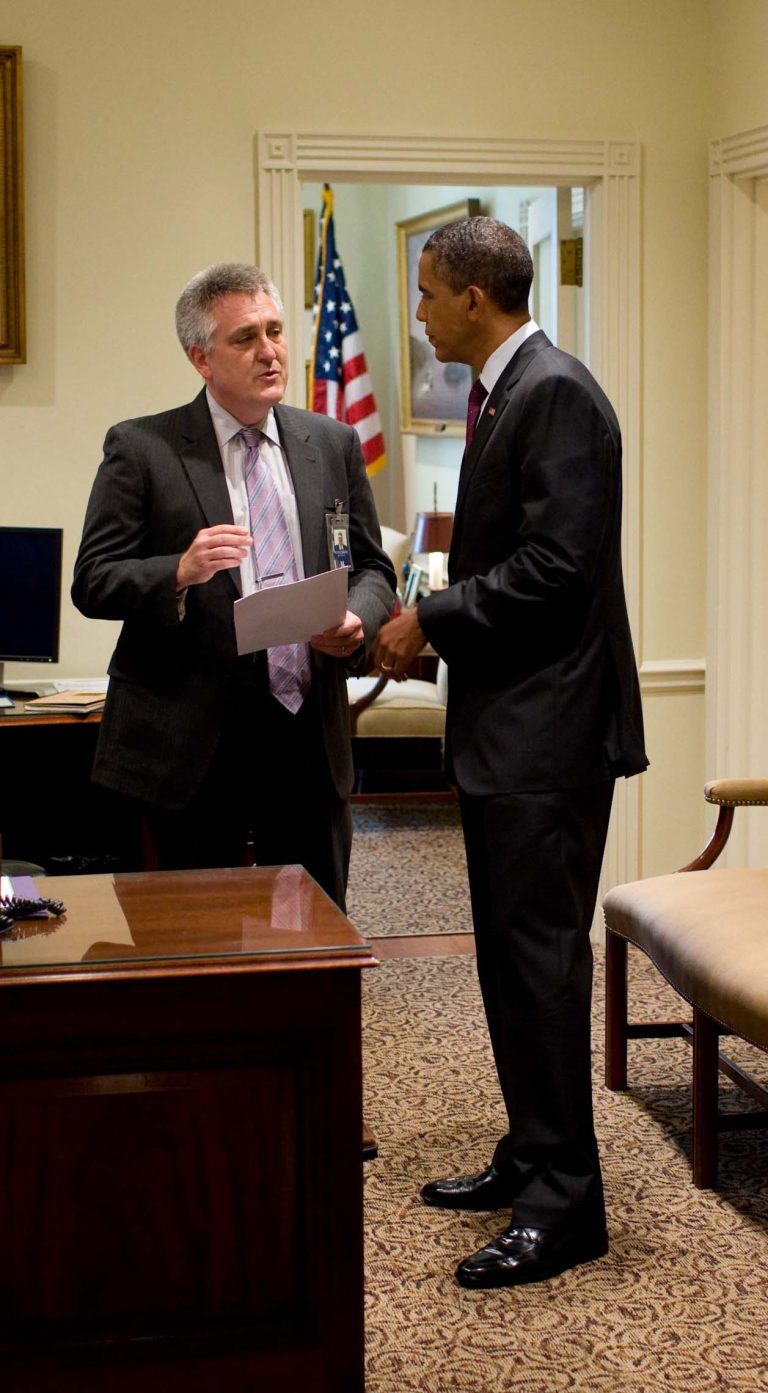
What would a typical day look like for you?
In 2012, President Obama’s reelection year, he undertook 200 trips. I accompanied him on 120 of them. During that year I lived in Silver Spring, Maryland. I would get up at home at the crack of dawn and drive down to the Eighteen Acres. I’d go through the gates and park on East or West Executive Drive, and I would go to my office. You got to wear a suit and tie. Helicopter Marine One lands on the South Lawn, and the president gets on. In the helicopter there are two Secret Service agents, maybe four staffers, the military aid. The doctor is usually the last one on. We fly over to Andrews Air Force Base, and the president walks over to Air Force One and up the stairs. What they don’t show on TV is that then the doctor and military aid run up the steps behind him. As soon as the door closes, we’re rolling. I don’t have to go to TSA precheck; I don’t have to use CLEAR; but I don’t get any frequent flyer miles.
If we are flying to Chicago, Air Force One is going to land at O’Hare. Then we get into Marine One and fly the 5 or 10 minutes down Lake Shore Drive to Lake Michigan. We fly right over Wrigley Field. During that time, everyone else is looking out the window or looking at the sights. In my mind, I’m thinking, Okay, at O’Hare, the Level I trauma center is Advocate Lutheran. We’ve gone past a checkpoint, now it’s Cook County, it’s Stroger Medical Center.
We land at the Millennial Park near Buckingham Fountain and get into the motorcade that is waiting for us. If we are driving down the Golden Mile, the Level I trauma center is Northwestern. If we’re going to the University of Chicago the pediatric trauma center is the University of Chicago, but the adult trauma center is still Cook County, still Stroger. We do three events, go back to the landing zone, get on the helicopters, fly over to O’Hare, and get back on Air Force One. We eat dinner on the way home. We land at Andrews Air Force Base and take Marine One back to the South Lawn. The president gets home by 7:00 p.m., and then I wrap up the day, make sure there’s nothing else I have to take care of, and maybe look at what we’re doing the next day. Then I walk back out to my car and drive 18 miles back home. I left before my family got up, and I will get home about bedtime.
If the president is in the White House for the day, for different ceremonies, official events, or meetings, I would average about 11 patients a day at the clinic in the Old Executive Office Building. We provide emergency medical support for a million guests who walk through the White House on the tour or different events every year. I may hear, “Man down in the tradesman entrance.” I’d run over there and switch into EMT paramedic mode. If they needed to go to a hospital, we’d work with the Secret Service to get them to GW University Hospital. If it is something I can take care of in the doctor’s office, I would bring them back to the doctor’s office and fix them up. Often they liked being in the president’s doctor’s exam room.
Over time, that kind of builds up. So the true hero is not me; it’s my wife and four kids.
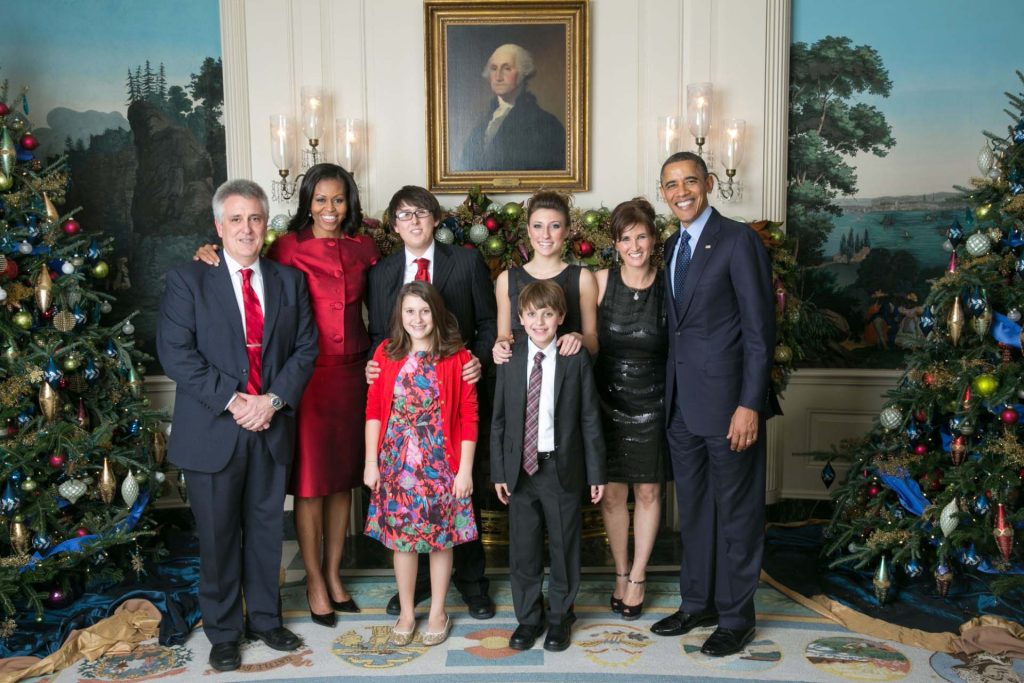
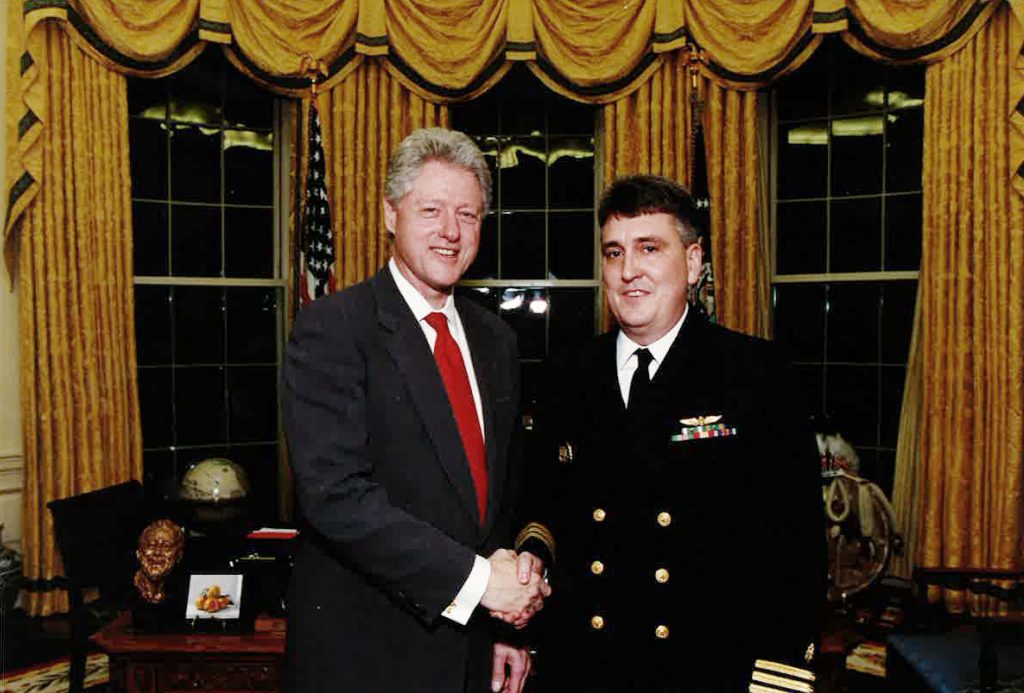
You’ve had such varied experiences as a physician. What advice would you give to
medical students?
First, what I learned from Gordon Hadley ’44-B, who called me by name when I showed up as a 19-year-old, walking in the amphitheater for that first day, “Listen to your patients. They’ll tell you what’s wrong with them.”
Second, don’t be overly enamored by technology. AI is out there, and so are EMRs. Just don’t be over-enamored by technology.
Third, give every single patient something for their time of need. It might be surgery, medication, therapy of some type, words of comfort, holding their hands, or giving them an embrace of support. Give them something in their time of need.
So that’s what I learned at Loma Linda over 40 years ago today. If you can do that, that means more, whether it’s the president I’m taking care of or whether it’s a homeless person at a clinic that I work at in Florida, or if it’s somebody on the Uros Islands in Lake Titicaca that’s never seen a doctor; it’s the same.
How did Loma Linda help you on your journey?
What I tell people is the clinical training I got at Loma Linda in medical school and residency was far superior to the clinical training elsewhere. At Loma Linda, the attendings really cared about helping me be a better physician—being a better person. They cared about my long-term success in doing the right thing. Loma Linda puts out competent, caring clinicians. I’ve worked with the best and the brightest, and the faculty and physicians I interacted with at Loma Linda are better than the rest.
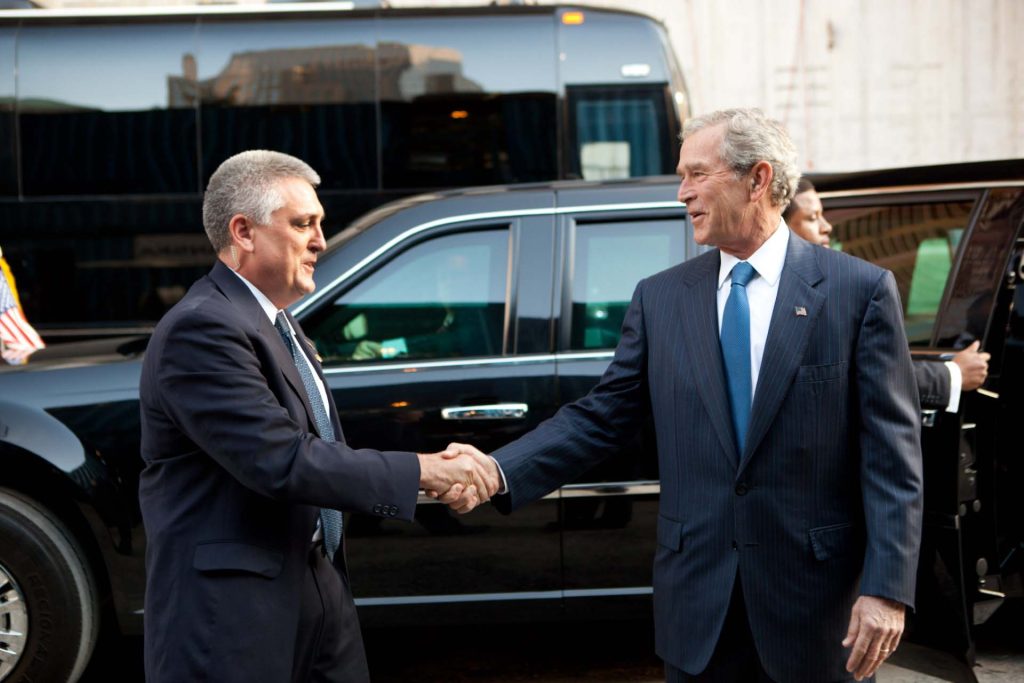
I’m struck by how prepared the physician to the President always has to be. Is there a story that encapsulates this level of preparation?
In 2008, a couple of months before the Summer Olympics, I traveled to China with the pre-advance team to prepare for the president’s visit. I worked with the Chinese Embassy and the U.S. State Department doctors in Beijing. They took me up near the Olympic sites, including the National Stadium or the Bird’s Nest and the Aquatics Center or the Water Cube. Then they walked me through the military hospital, and I saw the CT and MRI—there were no patients there using it. I said, “OK, I want to go to Peking Union Hospital and then Beijing Family, which are private hospitals.” They were flustered but finally took me up to the top floor of Peking Union to the VIP luxury suites.
They said, “This is where the heads of state are treated if they need to be hospitalized.”
I said, “Okay, that’s nice, but that’s not what we want to see. Take me to your helicopter pad, your emergency department where the decontamination is, and the resuscitation room. Walk me through the OR you would use if you had a knife stabbing or a gunshot wound.”
They got pretty upset at me, and they said several times, “This will not happen here.”
I said, “I know it’s not going to happen here. Humor me.” Reluctantly, they took me through these scenarios. Then I asked them about the plan for the trauma teams.
And they said, “the trauma teams will be at home, and if something happens, we’ll call them in.”
And I said, “Absolutely not. We found that during special events like this, the roads can be chaos.”
And so they huddled and came back and said, “Trauma team A will be here 24 hours, and then trauma team B will be here 24 hours.”
So I said, “Okay, great! You have everything in place. You have the capabilities.”
A couple of months later, on the morning of the opening ceremonies in that morning, a former Olympic volleyball player was walking with her parents at the Bell Tower when a man approached them and took out a knife. He decapitated her father and stabbed her mother several times in the stomach. They took her mother by ambulance to Peking Union where the trauma team was standing by. They saved her life.
That same day, President Bush had a break in his schedule, and he went on the Olympic Mountain biking track along with an off-duty military aid, Navy Bob. Navy Bob went over a ramp, crashed, and sliced open his chin. I took him back to the hotel and gave him vertical mattress stitches in his chin. It looked perfect. He asked, “Oh, do you think we need a plastic surgeon?”
And I said, “You realize I have you numbed, I have needles, and I’m sewing you up at the moment.” It turned out perfectly.
After that, President Bush went to the opening ceremonies.
It wasn’t a sightseeing trip for me.
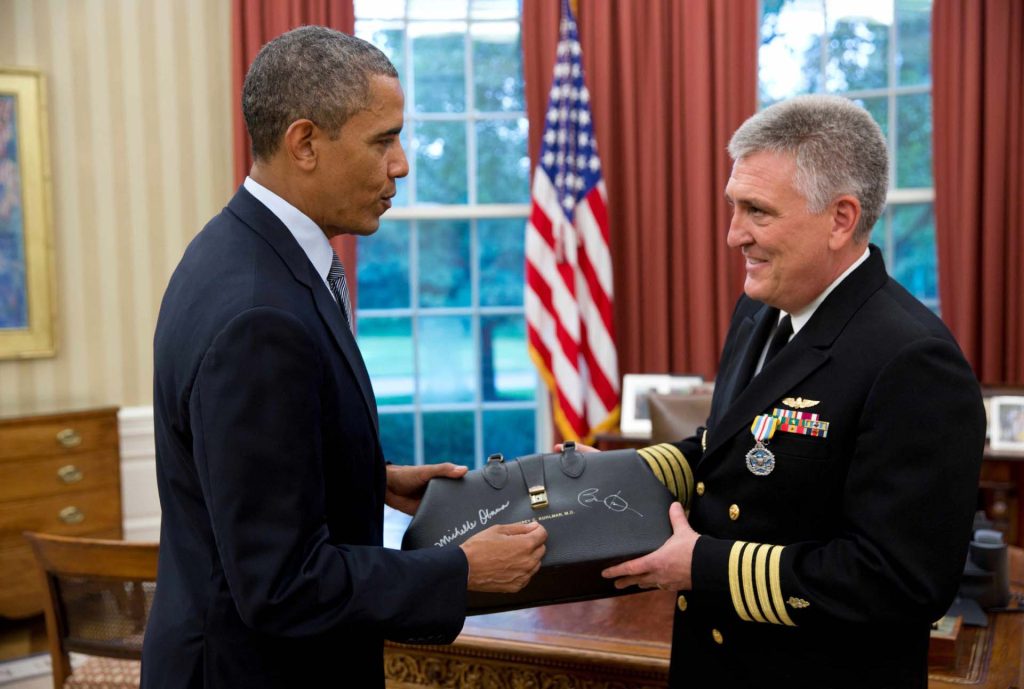
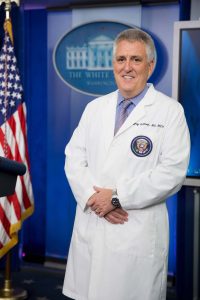 Jeffrey Kuhlman ’87, MPH is chief quality and safety officer for AdventHealth. He is a 30-year veteran of the U.S. Navy, serving thirteen years as White House physician. Captain Kuhlman was the director of the White House medical unit for President Bush and the physician to the president for President Obama. He is triple board-certified in family medicine, occupational medicine, and aerospace medicine. He is author of “Transforming Presidential Healthcare: Ensuring Comprehensive Care for the Commander in Chief.”
Jeffrey Kuhlman ’87, MPH is chief quality and safety officer for AdventHealth. He is a 30-year veteran of the U.S. Navy, serving thirteen years as White House physician. Captain Kuhlman was the director of the White House medical unit for President Bush and the physician to the president for President Obama. He is triple board-certified in family medicine, occupational medicine, and aerospace medicine. He is author of “Transforming Presidential Healthcare: Ensuring Comprehensive Care for the Commander in Chief.”
Published in the Fall/Winter 2024 ALUMNI JOURNAL.

